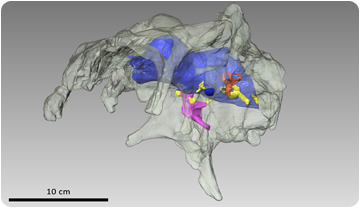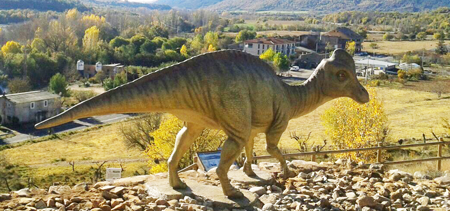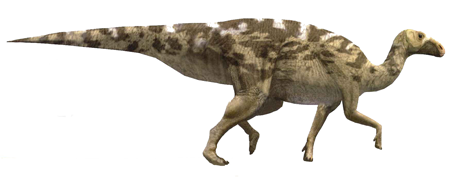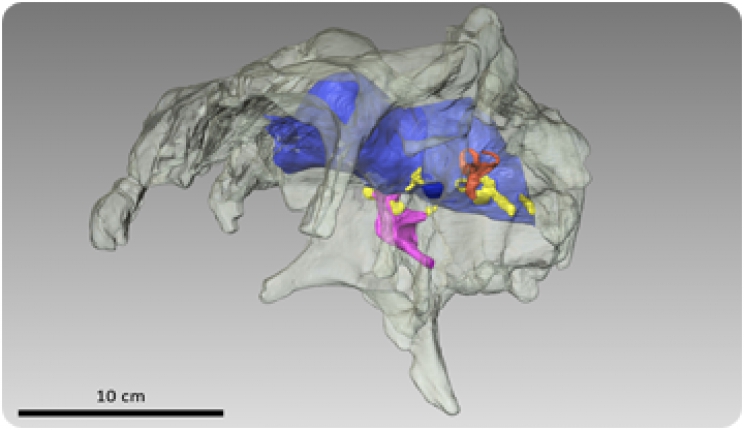
3D reconstruction of the skull and brain of Arenysaurus ardevoli Researchers at the Institut Català de Paleontologia Miquel Crusafont (ICP) have collaborated in the first three-dimensional reconstruction of the brain of Arenysaurus ardevoli, a European hadrosaur dinosaur species. Cranial material was CT-scanned and intracranial cavity, nerves and even the inner ear were 3D-modelled. Further analysis of the images supports the original classification of this specimen and may reflect some degree of dwarfism as a result of the conditions in the archipelago where this species evolved. The analyzed skull of Arenysaurus ardevoli is remarkably well preserved and without significant deformations, so an almost complete three-dimensional endocast could be reconstructed using a CT-scan. Segmentation of images was performed at the Institut Català de Paleontologia Miquel Crusafont. "The process involves assembling radiographic images and, virtually, separate the different materials found in the sample such as bone, matrix, air, etc. to generate a 3D model that shows the shape, size and volume of the inner cavities of the skull by means of a non-destructive system", explains Josep Fortuny, coordinator of the Research Group on Virtual Paleontology at the ICP. 
Reconstruction of Arenysaurus ardevoli at Arén, Huesca (Diego Castanera) Further analysis of the images has enabled researchers to validate the correct classifications of this species as a member of the lambeosaurine subfamily within the family of hadrosaurs (also known as "duck-billed" dinosaurs), which have the largest brains (in proportion to its body) within ornitischians, a large group of dinosaurs that includes well-known species such as triceratops or stegosaurus. In addition to its big brain size, hadrosaurs also show highly developed olfactory bulbs (a brain structure related to the sense of smell). Video: 3D model of the paleoneuroanatomical reconstruction 3D images also revealed some unique characters that might show an incipient process of dwarfism in this species due to insularity since, during the Late Cretaceous, what is nowadays known as Europe used to be an archipelago. Under insular conditions, where food resources are often limited and there is low predation pressure, species tend to be smaller than their mainland counterparts in order to maximize energy efficiency. Cranial remains of Arenysaurus ardevoli were found in Aren (Huesca) in the 90s by a research team from the University of Zaragoza. This species coexisted with other dinosaurs found in the Pyrenees such as Pararhabdodon isonensis, found just a few miles away in several sites of Isona. These areas of Aragon and Catalonia belong to the same geological unit, the Tremp basin, which for years has been providing exceptional fossil record remains of dinosaurs that lived about 70 million years ago. 
Reconstrucció de Pararhabdodon isonensis (Oscar Sanisidro) The neuroanatomy of American and Asian hadrosaurids is well known, but only a few cranial remains have been recovered in Europe that include the braincase. This scientific article, published in the latest issue of the PeerJ, is the result of the collaboration of researchers from the ICP, the University of Rio Negro-CONICET in Argentina and the University of Zaragoza. + info: Cruzado-Caballero P, Fortuny J, Llacer S, Canudo J. (2015) Paleoneuroanatomy of the European lambeosaurine dinosaur Arenysaurus ardevoli. PeerJ 3:e802 DOI:http://dx.doi.org/10.7717/peerj.802 |










